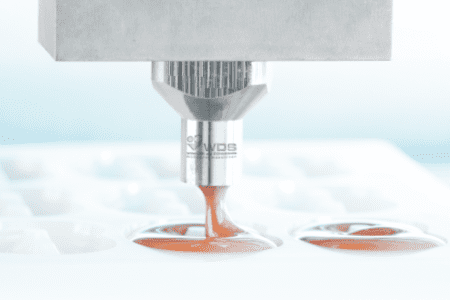Variety in cookies is precisely why consumers keep reaching for them. Adding inclusions helps maximise appeal and can be carefully controlled with vision inspection systems, says Editor Caitlin Gittins
The competitiveness of the cookie market can be combatted by adding inclusions to cookies, offering bakers a simple way of increasing taste and texture appeal while experimenting with different combinations. The classic example of the timeless chocolate chip cookie demonstrates that some trends come and go, but others stick and remain hugely popular with consumers. Guaranteeing product quality when producing cookies with inclusions can be achieved through applying vision inspection systems in the production line.
Affordable indulgence
Consumers are continuing to pick cookies out from the rest of the baked goods bunch, because they’re seen as an affordable indulgence, provide comfort with each chewy bite and act as a treat. According to a consumer survey ‘Cookies Crazed 2022-2023’ conducted by Barry Callebaut in March 2022, 56% said they buy cookies as a treat for their household or themselves, while 45% said they needed more comfort and, pertinently, 26% reported there being more flavours and varieties available compared with other baked goods.
More recently, their growth has been fuelled by convenience and price, said Jonathan Adams, R&D Director at Baker & Baker UK. The perception of bakery as an affordable indulgence has helped to carry it through times of economic hardship and inflationary pressure. “Cookies can offer an affordable treat when compared with other sweet categories, particularly as prices continue to rise due to raw material inflation,” explained Jonathan.
“There is also a wide range of tiering across the cookie category, so depending on consumer inclinations; there will be a price point to suit,” he continued. “Cookies are also very easy to eat on the move, compared to a flaky pastry or crumbly cake.”
Trends identified by Baker & Baker impacting the cookie market include the cost-of-living crisis, HFSS regulations, premium indulgence and sustainability. The trend towards premium indulgence shows “Consumers are seeking cookies that offer a satisfying and indulgent experience, such as gourmet flavours, decadent toppings or unique shapes and sizes … During the last few years, we have seen some innovation with different formats, such as sandwich cookies, cookie bars, or cookie cups, but generally, the market has moved back to the more traditional cookie format, executed well,” added Jonathan.
Of course, while capitalising on these trends the chosen topping, filling or inclusion will need to take into account several factors. “The distribution of inclusions, like chocolate chips, is crucial for a balanced taste,” said Finbar Haughey, Technical Baker at Andrew Ingredients. “Timing matters – consider if the inclusion can withstand baking heat and still enhance taste, texture and appearance.”
Besides how the ingredients perform during baking – as any degradation or melting may ruin the appearance of the cookie and its visual appeal – the ingredients’ impact on overall shelf life comes into play, too. “Shelf life is pivotal; fresh toppings, fillings and inclusions may shorten overall product shelf life,” he explained.
“Storage conditions matter too; ensure the inclusion aligns with storage methods, whether in an airtight container or the fridge,” added Finbar. “If you’re freezing cookies, check if all the ingredients can endure freezing without compromising quality upon defrosting. Be wary of moisture content of cookies and filings…
Read the full feature in our free to download magazine.
Never miss a story… Follow us on:
![]() International Bakery
International Bakery
![]() @int_bakery
@int_bakery
![]() @Bakeryint
@Bakeryint
Media contact
Caitlin Gittins
Editor, International Bakery
Tel: +44 (0) 1622 823 920
Email: editor@in-bakery.com






